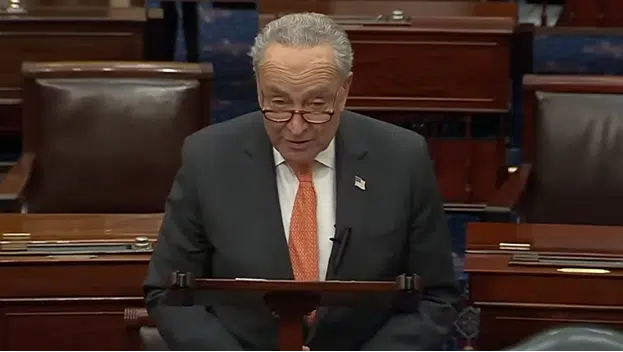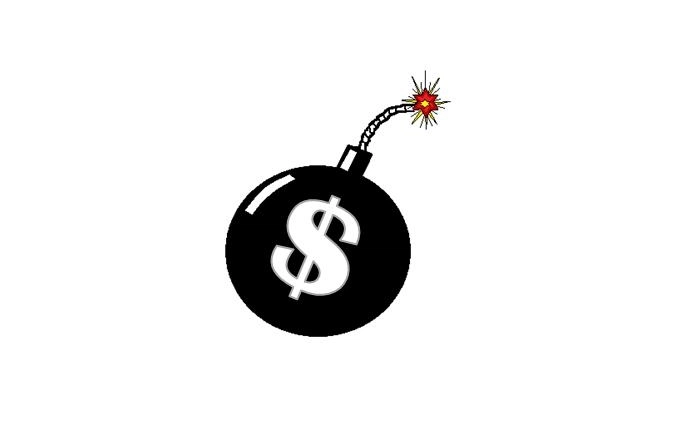
So far, revenues are averaging $172.5 billion a month, and spending $319 billion. For every dollar we spent, we had to borrow 45 cents. That’s an average deficit of $146 billion every month.
Even if Obama gets everything he wants — where income, capital gains and dividends tax rates all increase on the top two-brackets — it will only raise $80 billion in 2013, or $6.6 billion a month, reports the CBO. That barely makes a scratch in the deficit.
The debt would still grow by more than $1 trillion annually, just like it has every year for the past four years.
That puts Obama’s fiscal cliff scenarios somewhere in between Thelma and Louise and Wile E. Coyote. Either way, the American people fly off the cliff — borrowing far more than we take in, and paying higher taxes to boot. The only question is whether survival is possible upon impact below.
Consider this. The $16.4 trillion national debt is already larger than the entire economy. By 2022, it will rise to $26 trillion. By 2042, if nothing changes, it could easily be as high as $100 trillion — far outpacing the likely growth of the economy.
For reference, the economy is currently growing at just a 2 percent annual real rate. But even if you do not adjust Gross Domestic Product (GDP) for inflation — on that count it is growing at a 4.1 percent rate — the debt is still growing faster, at an 8.6 percent rate in the last fiscal year.
It is a dynamic that will not change one iota even with Obama’s supposed, “balanced” approach to deficit “reduction.”
Yet we are assured that the debt could “never” become so large that it cannot be repaid — as New York Times’ Paul Krugman does.
“[W]e have our own currency,” Krugman wrote in a Nov. 25 column, and the government “literally can’t run out of money. After all, it can print the stuff.”
Some $450 billion of debt is coming due in 2013 alone, which when coupled with an expected $1.2 trillion of expanded debt this year, means the government will need to sell more than $1.6 trillion of treasuries this upcoming year.
By 2022, that figure will rise to more than $2 trillion treasuries sold every year to refinance and expand the debt. By 2042, if the debt really does get as high as $100 trillion, annual treasuries auctions would have to be more than $6 trillion.
And that’s assuming interest rates stay at today’s historic lows — a risky proposition.
But even if they do, the inflation implied by Krugman’s assertion will break the back of middle America. That is, if inflation must grow at the same rate as the national debt in order to pay for it.
However, if Krugman’s assertion that the debt can be inflated away is true, it would require an inflation rate minus growth in excess of at least 5.6 percent — today’s debt growth rate minus a generous 3 percent growth rate going forward — just to break even. It is inconceivable that the interest rates on the debt could stay at historically low levels under those circumstances.
That is why political leaders today must confront our debt troubles, balance the budget, and begin rapidly reducing the debt as a share of the economy — before we discover how disastrously wrong Krugman really is, and wind up over the cliff with Thelma, Louise, and the not-so-wily coyote.
Robert Romano is the Senior Editor of Americans for Limited Government.






